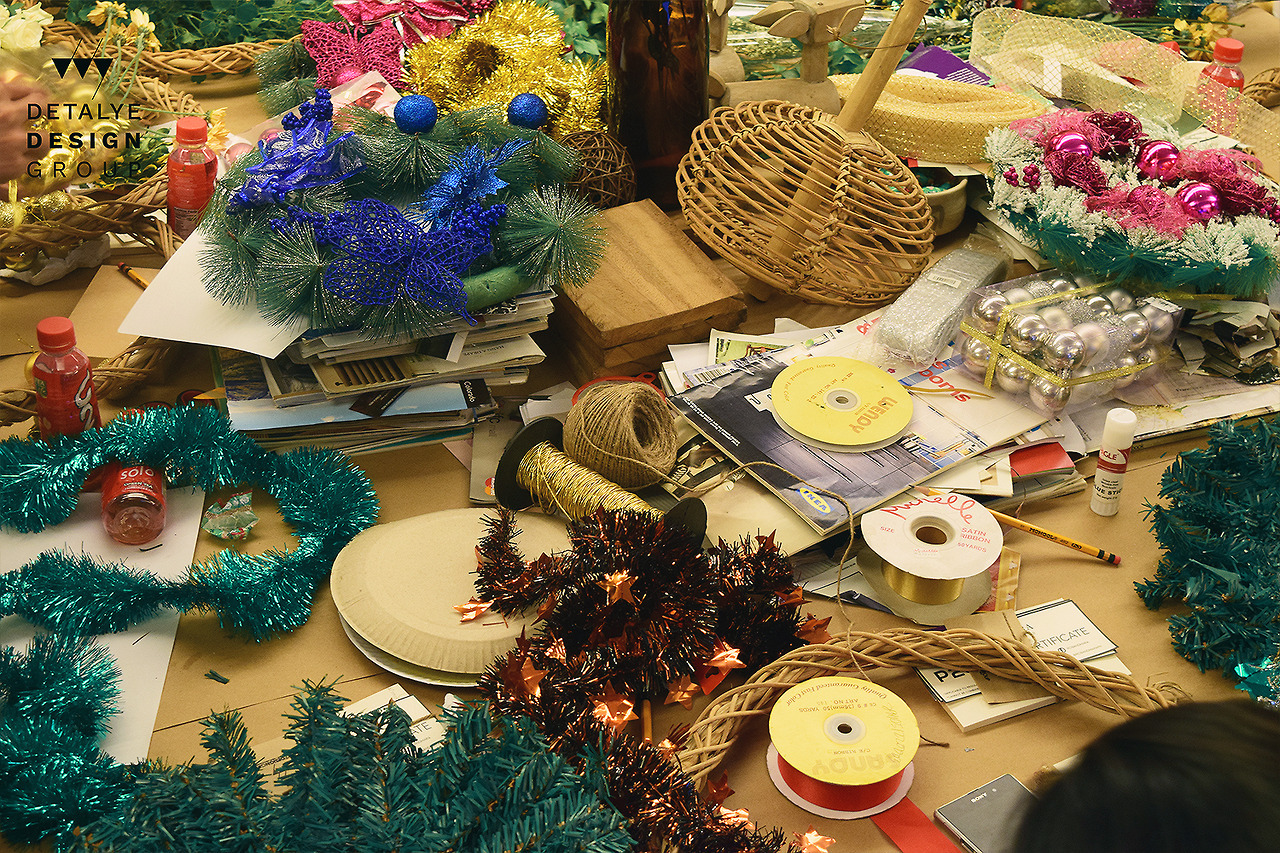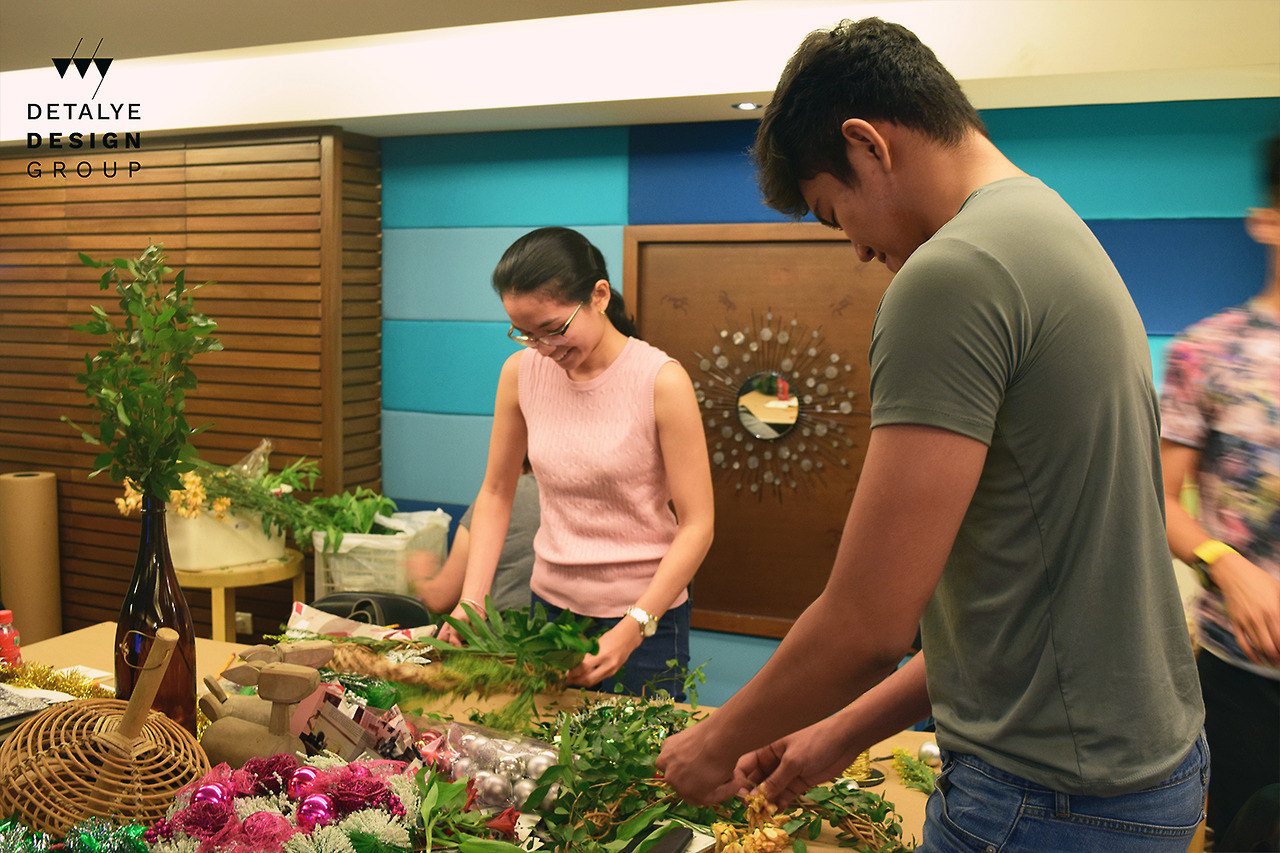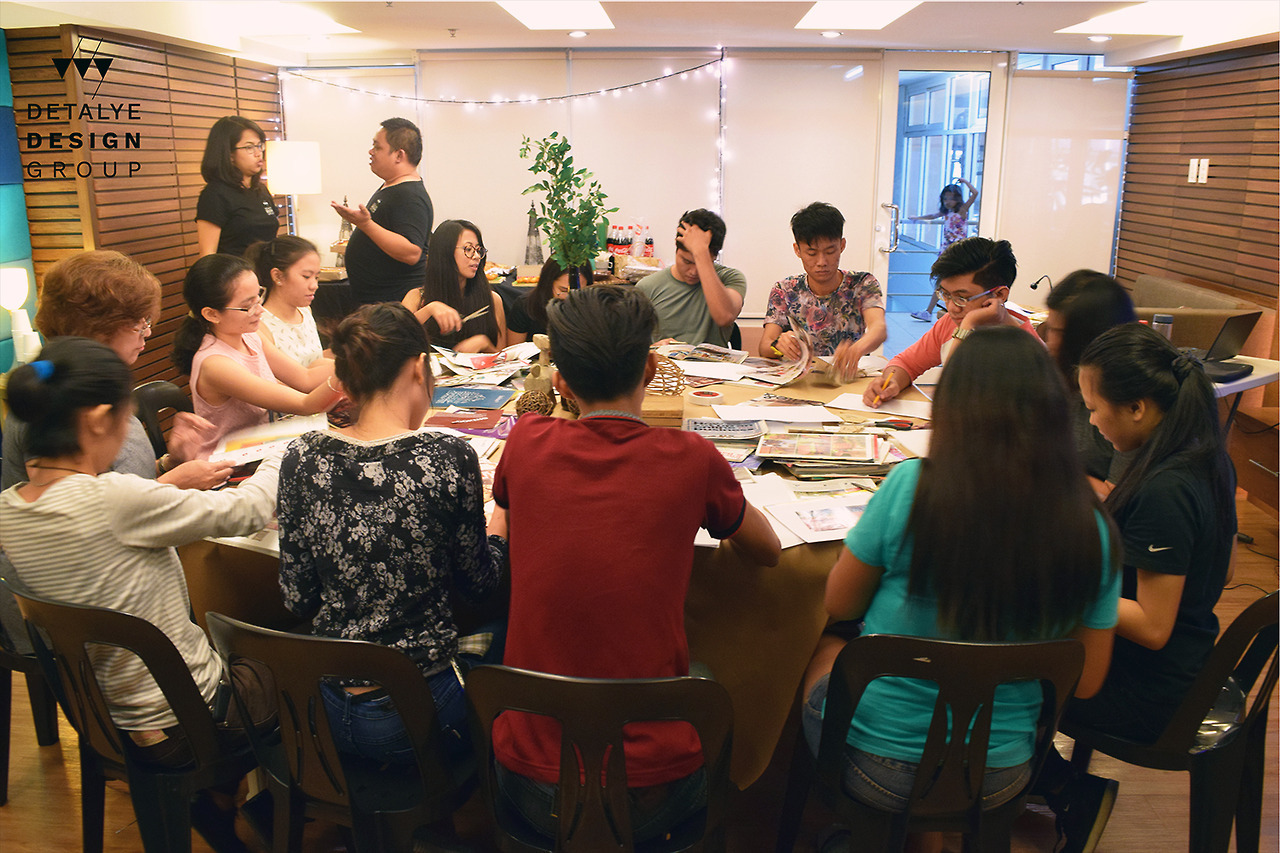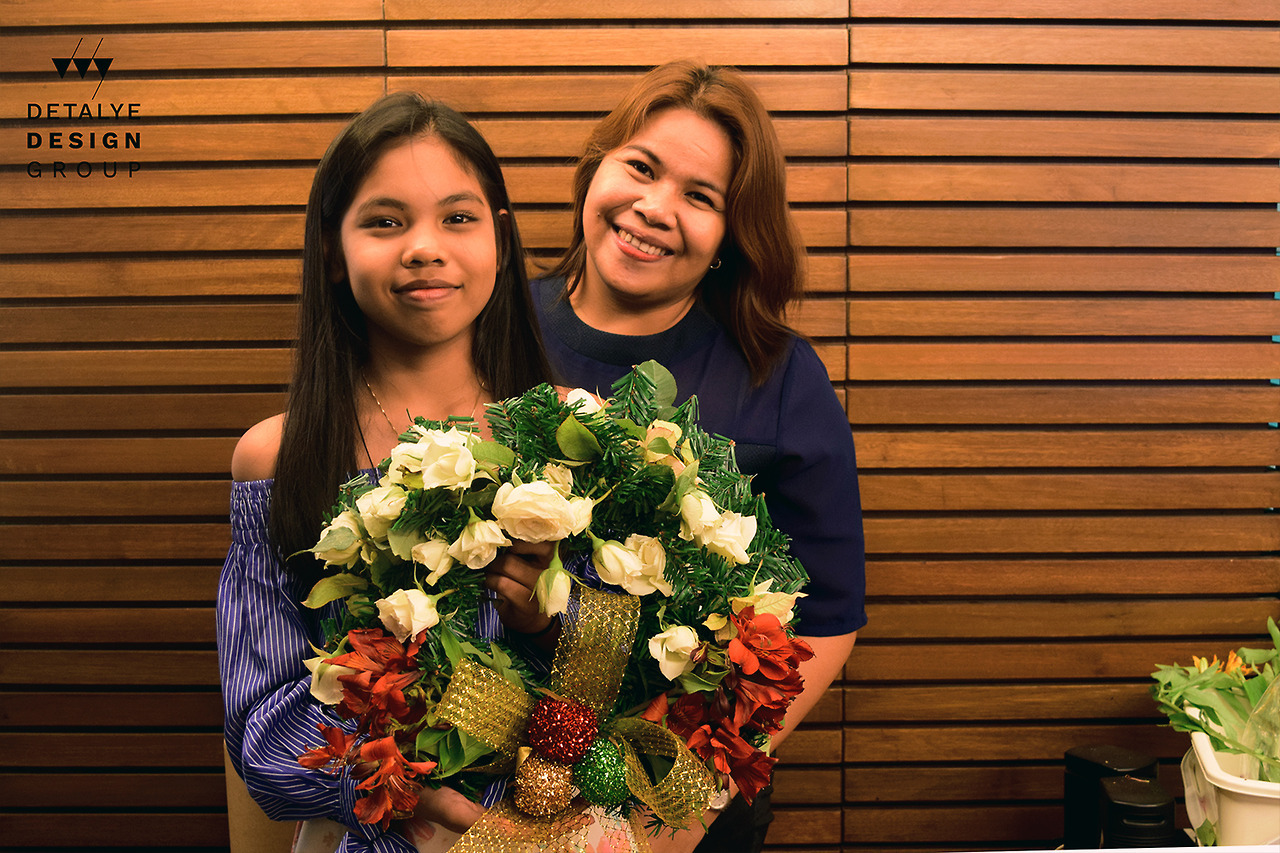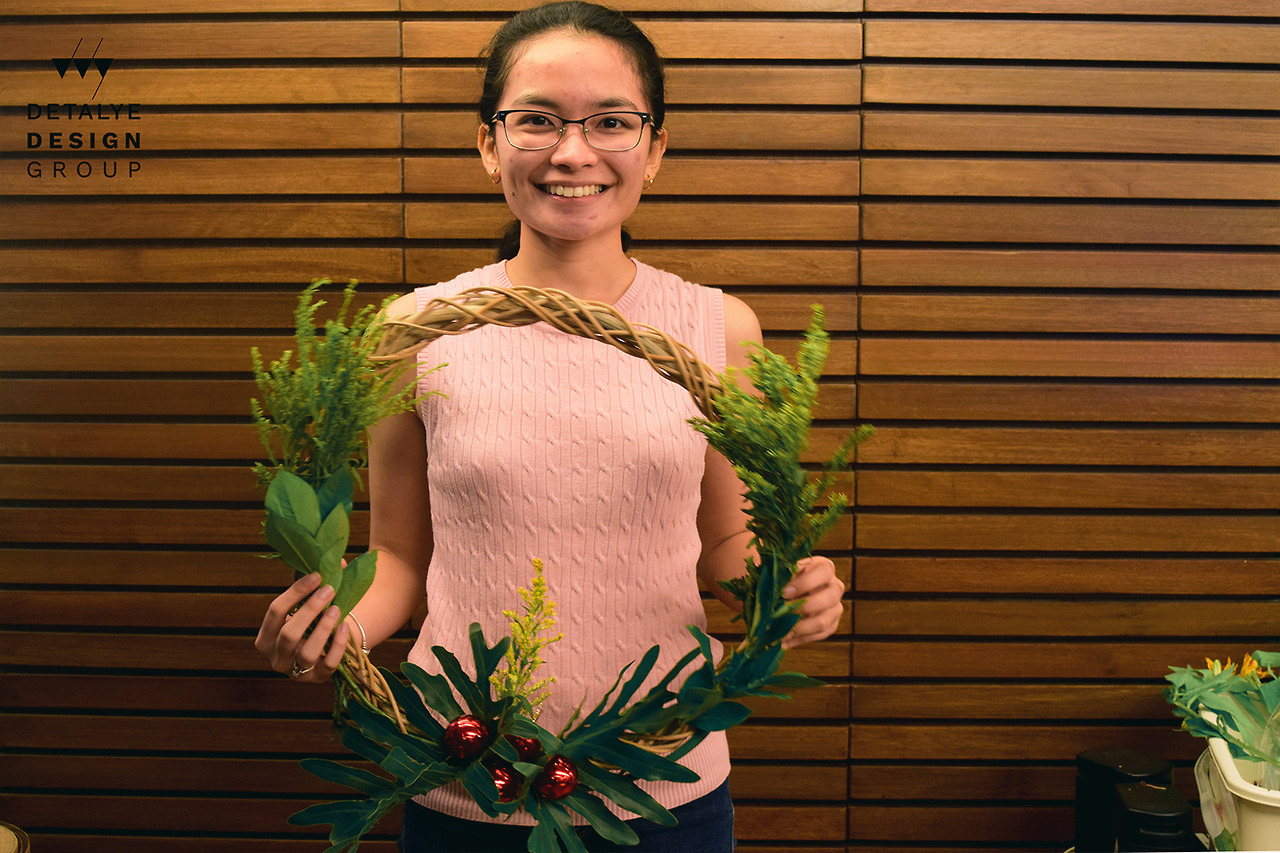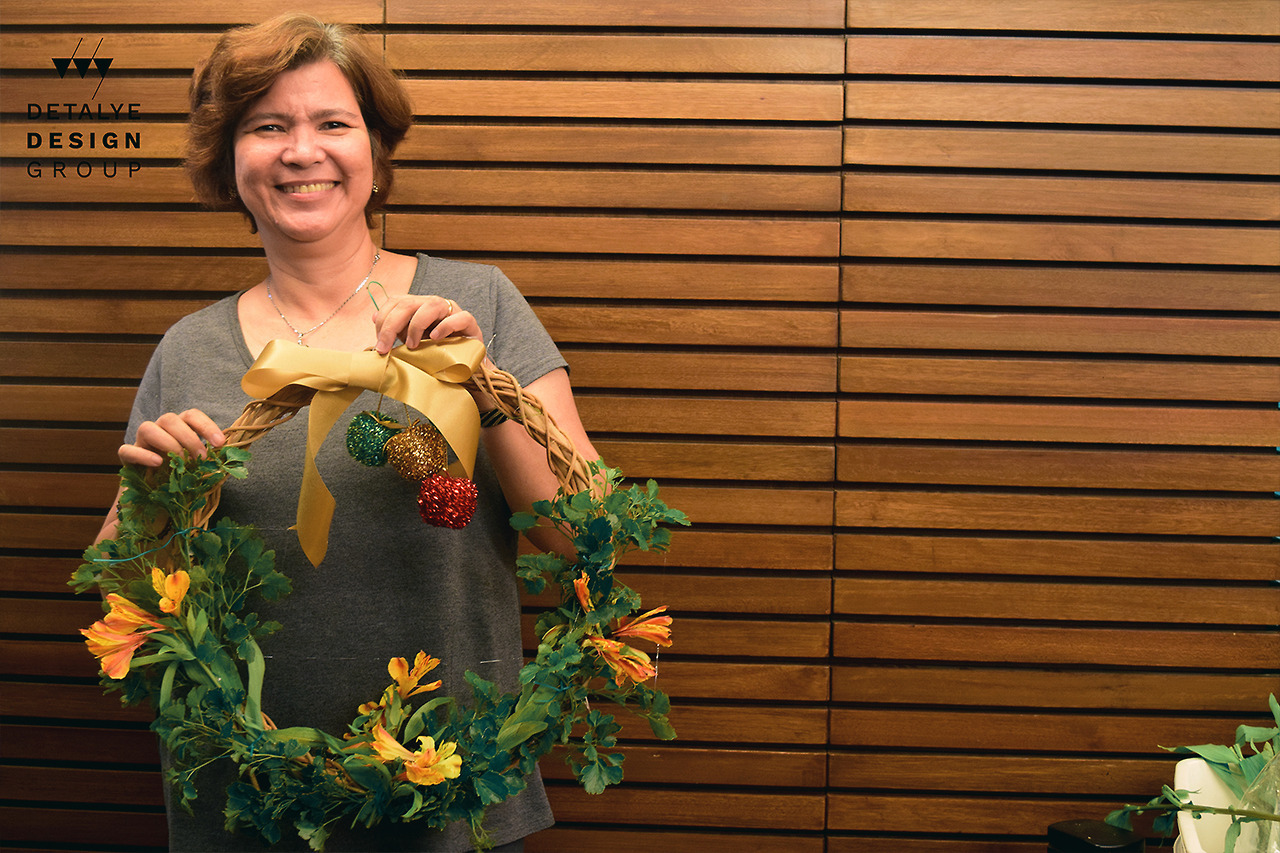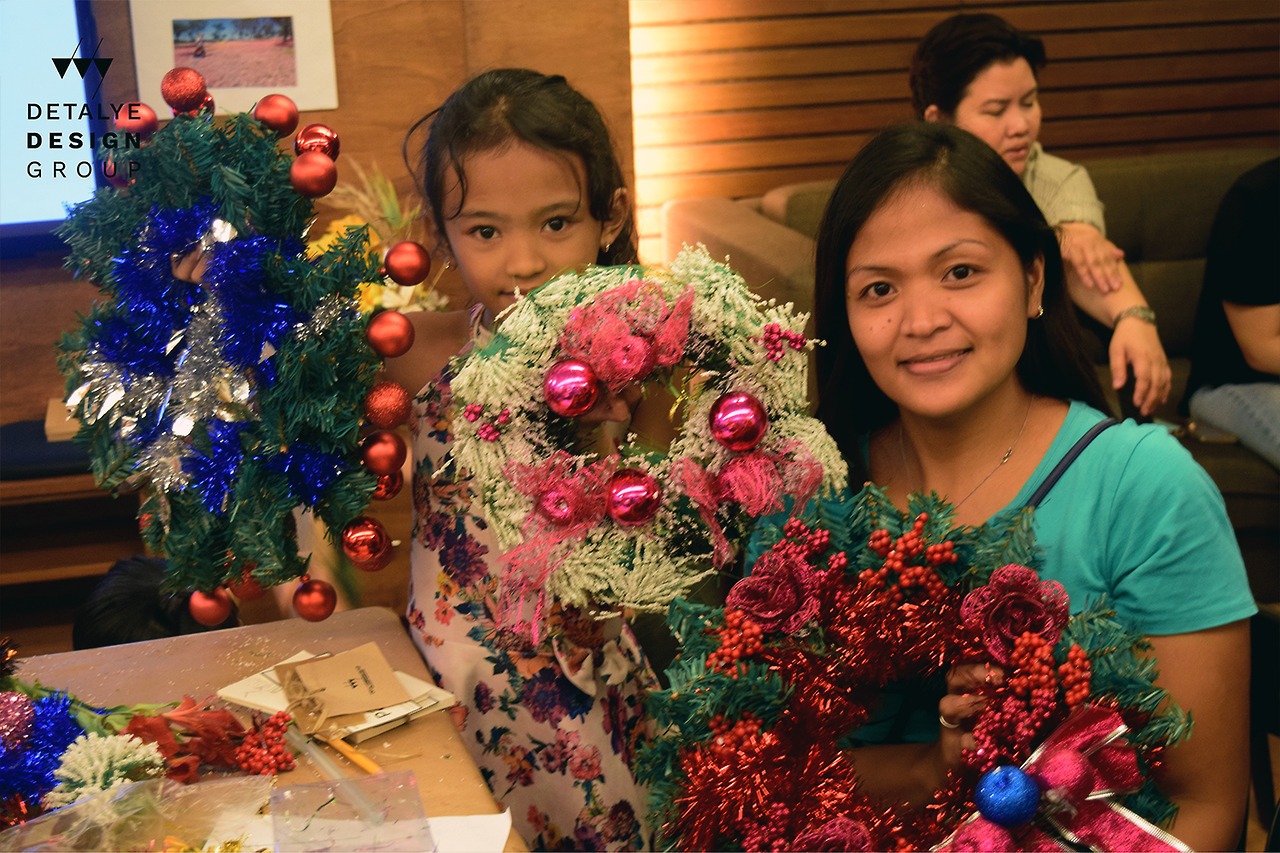Article by Sophia Teaño | Graphics by Salie Agustin | Photos from Detalye Design Group
The Philippines is known to be a country that celebrates Christmas for an extended period of time. From the installation of street lights to Simbang Gabi delicacies, the spirit imbibed from the season is unmistakable. Homes don’t get left behind, either, since they strongly reflect the celebrations, as well.
When you say Christmas, the first colors that come to mind tend to be green and red. Detalye Design Group, an interior design firm, tells another story, though. Their first workshop in their series of talks, My Christmas Story: A Christmas Home Styling Workshop, showed its participants how to style Christmas beyond the typical.
Interior styling, like any other visual and design-related disciplines, is grounded on elements and principles. Knowing them will have you designing the way pros do it, as Sir Aaron Paglicawan, an Interior Designer from the firm, shares.

Pay attention to lines, shapes, and forms.
Consider these three elements as stepping up from one element to the next. Lines create shapes, and 3D shapes become forms. Play around with these elements to create interesting features in your decorations. You can play around with the direction of lines, the sizes of shapes, and the curves of forms, for example.
Rethink the way you choose colors.
As already mentioned, red and green is the most common color combination used during Christmas. These colors are usually present in the pine of Christmas trees, and the red of poinsettia. You don’t have to limit yourself to that, though. This match is actually a set of complementary colors based on the color wheel. Try exploring pairs like blue and orange, or yellow and violet. You may also try other combinations involving monochromes, analogous, triadic, tetradic, or split complementary colours.
Observe balance.
This design principle can be symmetrical, asymmetrical, or radial. When it comes to balance, you can play around with the optical weight of your decoration motifs and emblems. Symmetrical and simplified involves creating balance and where the elements of the left side is reflected on the rights side. Asymmetrical, on the other hand, does the opposite: there is no equal projection of the objects from side to side. Lastly, radial balance emulates a circle, from which the elements extend in all directions from a central point.
Practice putting rhythm.
This feature is established through the repetition of an element. By using the principle of rhythm, you can create more impact to the viewers of the decoration. Since a particular feature is given attention to recurrently, it draws focus to particular elements that are being repeated as opposed to putting them up randomly.
(READ: Surprises Await Shoppers for SM’s 100 Magical Days of Christmas)
Look for your emphasis.
What do your decorations want to focus on? The candles on the centerpiece? The beauty of the large star you incorporated? Emphasis directs the eye towards a focal point. By using a focal point, the eyes aren’t overwhelmed and the highlights are appreciated better.
Take note of your proportion and scale.
Proportion and scale promote a visually logical experience for the eyes. By giving attention to these two principles, the overall appearance of the design will look more natural. If an item is sticking out unnecessarily, it can cause uneasiness to the eyes. If your objects are too small, their beauty might be missed out on. Conversely, if they’re too big, they might be too overpowering.
Aim for harmony and unity.
These two principles guide the unifying characteristic of the design. They may include a recurring color, the material, or the texture, for example. Sir Aaron noted four styling genres that especially showcase these particular traits.
- Traditional – This is the most typical styling. Usual motifs include using red and green, white, and pinecones.
- Rustic – This style tends to look raw and unfinished. Suggested materials include twills, twigs, leather, lace, and even decorative rust.
- Modern – This styling option establishes a sleek and clean feel. This usually uses straight lines and minimal adornments and tends to have a shiny finish.
- Filipino – This option uses materials like twigs, dried bamboo, and other local raw materials.
Check out some of the wreaths made by the workshop’s participants below:
Got all that? Here’s a graphic to help you out!
In the end, your home’s Christmas decoration should reflect what the season means to you. What makes your Christmas story yours? To learn more about techniques and tricks that’ll set apart your styling, Detalye Design Group is offering Detalks, a series of styling and design-related talks and workshops.
My Christmas Story was held by Detalye last October 28, 2017.
Do you have your own tips to level up your Christmas decorations? Share your tips and pictures in the comments section!
(READ: Universal Studios’ Wizarding World Christmas Attractions)
Detalye Design Group
647-A Visayas Avenue, Barangay Bahay Toro, Quezon City
0917 812 3241
detalyedesign@gmail.com
Facebook: https://www.facebook.com/detalyedesigngroup
Website: https://detalyedesigngroup.com

